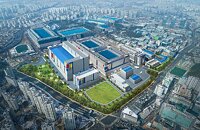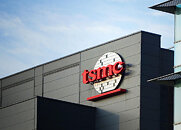GrAI Matter Labs Unveils sparsity-native AI SoC
GrAI Matter Labs, a pioneer of brain-inspired ultra-low latency computing, announced today that it will be unveiling GrAI VIP, a full-stack AI system-on-chip platform, to partners and customers at GLOBAL INDUSTRIE, May 17th-20th, 2022. At GLOBAL INDUSTRIE, GML will demonstrate a live event-based, brain-inspired computing solution for purpose-built, efficient inference in a real-world application of robotics using the Life-Ready GrAI VIP chip. GrAI VIP is an industry-first near-sensor AI solution with 16-bit floating-point capability that achieves best-in-class performance with a low-power envelope. It opens up unparalleled applications that rely on understanding and transformations of signals produced by a multitude of sensors at the edge in Robotics, AR/VR, Smart Homes, Infotainment in automobiles and more.
"GrAI VIP is ready to deliver Life-Ready AI to industrial automation applications and revolutionize systems such as pick & place robots, cobots, and warehouse robots, as being demonstrated at the show," said Ingolf Held, CEO of GrAI Matter Labs. "GrAI Matter Labs has a pipeline of over $1 Million in pre-orders, and we are thrilled to enable our early-access partners and customers in industrial automation, consumer electronics, defence and more, with our GrAI VIP M.2 cards sampling today." "GML is targeting the $1 billion+ fast-growing market (20%+ per year) of endpoint AI with a unique approach backed by innovative technology," said Karl Freund, Founder and Principal Analyst at Cambrian-AI Research. "GML's 'Life-Ready' AI provides solutions that here-to-fore were simply impossible at such low footprint and power." AI application developers looking for high fidelity and low latency responses for their edge algorithms can now get early access to the GrAI VIP platform and drive game-changing products in industrial automation, consumer electronics, and more.
"GrAI VIP is ready to deliver Life-Ready AI to industrial automation applications and revolutionize systems such as pick & place robots, cobots, and warehouse robots, as being demonstrated at the show," said Ingolf Held, CEO of GrAI Matter Labs. "GrAI Matter Labs has a pipeline of over $1 Million in pre-orders, and we are thrilled to enable our early-access partners and customers in industrial automation, consumer electronics, defence and more, with our GrAI VIP M.2 cards sampling today." "GML is targeting the $1 billion+ fast-growing market (20%+ per year) of endpoint AI with a unique approach backed by innovative technology," said Karl Freund, Founder and Principal Analyst at Cambrian-AI Research. "GML's 'Life-Ready' AI provides solutions that here-to-fore were simply impossible at such low footprint and power." AI application developers looking for high fidelity and low latency responses for their edge algorithms can now get early access to the GrAI VIP platform and drive game-changing products in industrial automation, consumer electronics, and more.




































